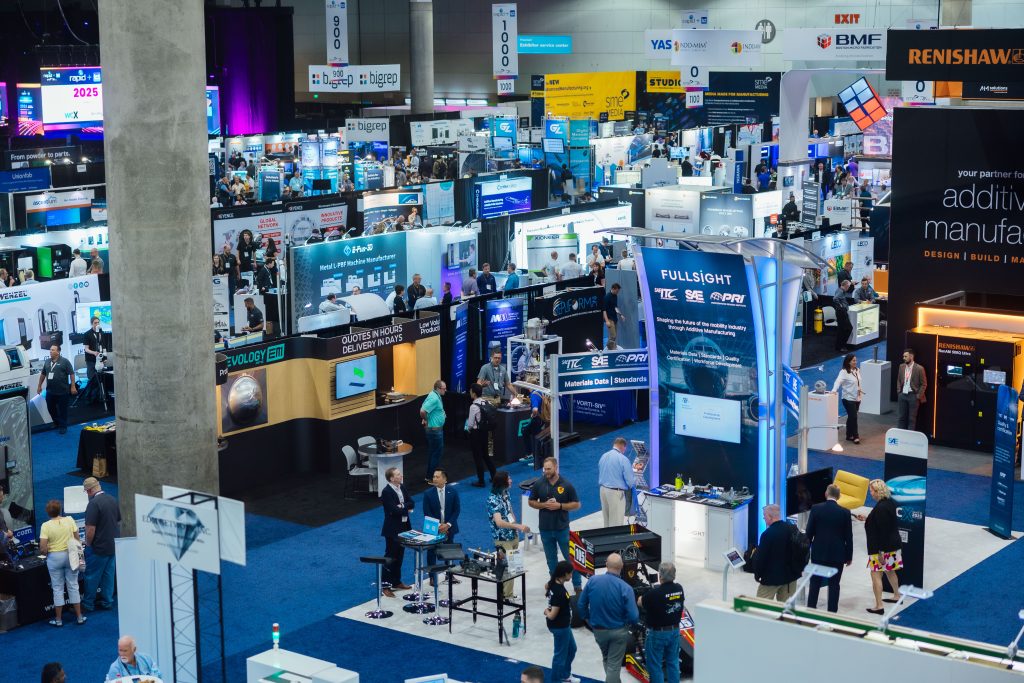RAPID + TCT returns to the home of US automotive manufacturing in 2025. North America’s largest 3D printing trade show will run at Detroit’s Huntington Place between April 8-10.
Over 400 additive manufacturing companies will attend the show, which is co-locating with SME’s AeroDef Manufacturing and SAE International’s WCX in the Motor City. As the largest technical mobility event in the US, WCX will be complemented by RAPID + TCT’s stacked automotive conference track. Over the three-day 3D printing event, fifteen presentations will explore key mobility topics, including upcycling, end-use production, design, and development.
On day one of RAPID + TCT 2025, Erik Riha and Fadi Abro will discuss how leading automaker Ford Motor Company is leveraging Stratasys’ 3D printers to enhance prototyping and product validation. I recently spoke with Riha, a Prototype Technical Specialist at Ford, and Abro, Stratasys’ Global Automotive Director, to learn more about their collaboration. They highlighted the value of 3D printing for car development, describing it as a critical “tool in the toolbox.”
Boasting three decades of automotive experience, Riha uses additive manufacturing to aid product development, rather than for iterating designs. Based out of Ford’s Product Development Center in Dearborn, Michigan, his team fabricates jigs, fixtures, and “surrogate parts” such as test car bodies. These are used to assess and validate vehicle assembly and manufacturability. “There’s not one part of the vehicle we haven’t touched,” Riha explained.
Abro called Stratasys’ F3300 3D printer, recently adopted by Ford, a “step change in how FDM works and produces parts.” He highlighted how the system speeds up high-quality part production, enabling Ford to stay productive, meet demand, and reduce costs.
Stratasys’ automotive expert also addressed “misconceptions” surrounding the rise of low-cost desktop 3D printers. While acknowledging that “desktop hobbyist units” have a home in education and maker spaces, Abro believes they cannot match Stratasys’ performance for industrial applications. He explained why these consumer-level offerings “hurt our business” and “taint the image of additive.”
Are you interested in attending RAPID + TCT 2025? 3D Printing Industry readers can claim a complimentary expo pass with the promo code 3DPI. Sign up today at the official RAPID + TCT website.
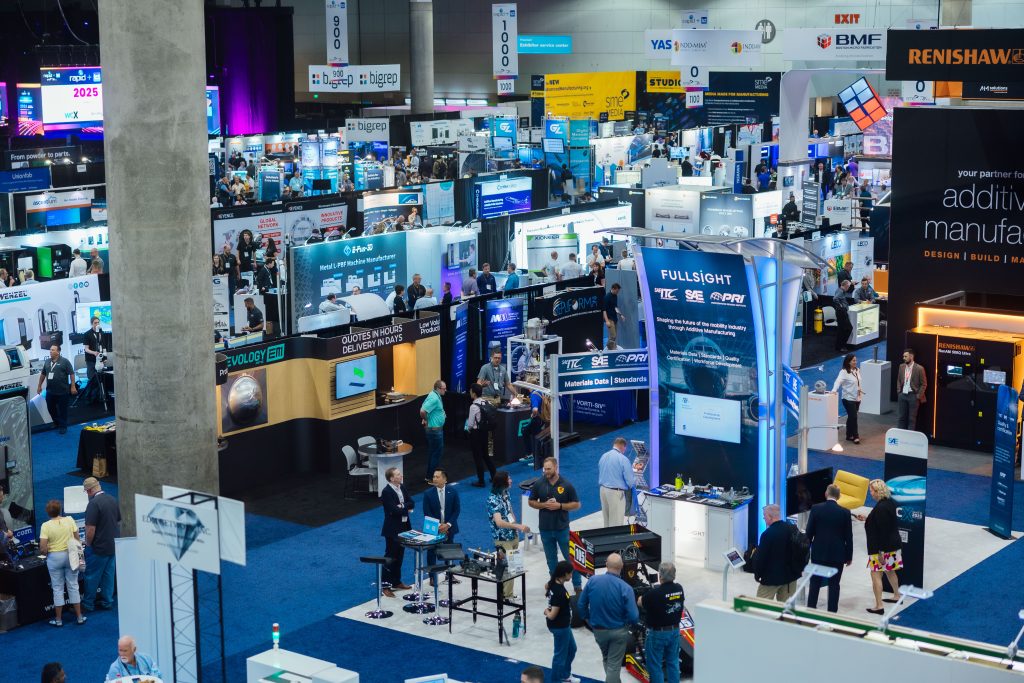
Ford and Stratasys at RAPID + TCT 2025
At 11:00 AM EDT on Tuesday, April 8, Riha and Abro will take to the stage to discuss the value of additive manufacturing for automotive product development. “Riha’s going to cover Ford’s use of additive manufacturing and its applications, and I’ll talk about what’s new at Stratasys,” explained Abro. Ford’s prototyping expert added that the session will include performance comparisons and case studies of complex prototype assemblies produced with 3D printing.
Stratasys’ F3300 3D printer will be at the crux of the conversation. According to Riha and Abro, Ford’s adoption of the Stratasys F3300 3D printer is less about unlocking new applications and more about streamlining manufacturing processes. The Michigan-based automaker already employs a fleet of Stratasys FDM printers, including the Fortus 900mc.
Riha explained that his team recently acquired its new Stratasys 3D printer after moving to a larger facility with higher production demands. Initially, he considered purchasing another 900mc because of its proven reliability and 24-hour operation. However, the F3300 quickly emerged as the better choice due to its superior speed, efficiency, and part quality. “In terms of throughput, it has outperformed our 900s,” Riha said. “It’s now our flagship 3D printer and has proven to be incredibly robust.”
The F3300’s enhanced productivity and efficiency stems from its ability to self-calibrate, eliminating manual setup requirements. Faster calibration, in turn, reduces labor costs, “which our customers have been asking for for years,” explained Abro. Riha added that this level of automation saves valuable time, particularly when engineers are juggling urgent print jobs.
Stratasys’ latest FDM 3D printer initially raised concerns for Ford due to its reduced size. The large-scale Fortus 900mc boasts a 914 x 610 x 914 mm build volume, compared to 600 x 600 x 800 mm offered by the F3300. However, Abro revealed that the 3D printer can accommodate 80–85% of typical parts. “If you’re printing a six-foot part, the biggest printer we have can’t do that either, so you’re splitting those parts anyway,” explained the global automotive director. “Once I looked at it, Fadi was right,” Riha added. “Most of our large parts already need to be made in two sections and glued together.”
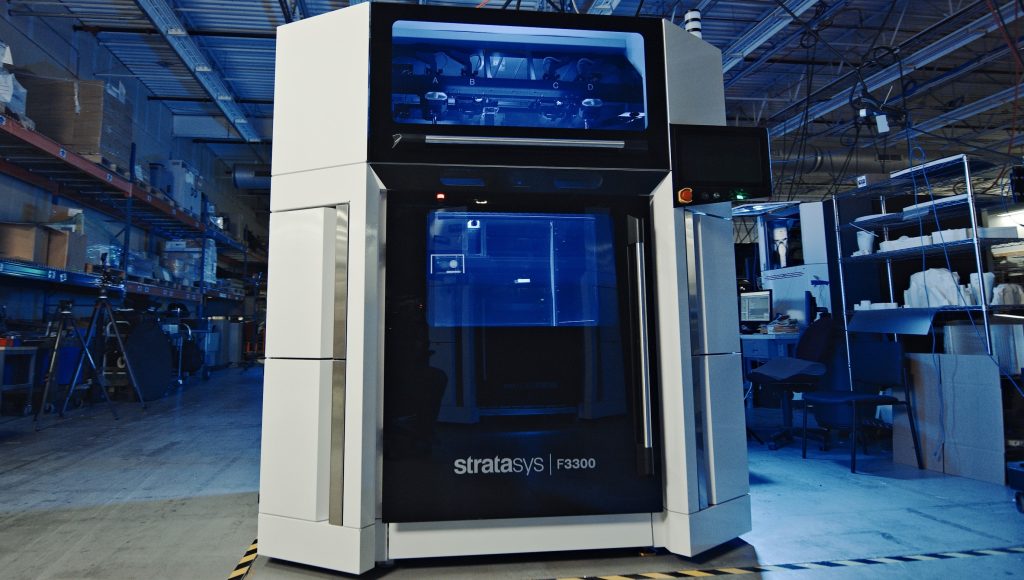
3D printing at Ford
The automotive AM experts argue that the value of 3D printing for automotive applications is not in the mass production of end-use consumer parts. Instead, Abro believes the “middle category” between the design and fabrication stages is “where additive belongs.” This includes design validation with surrogate and trial parts, producing jigs and fixtures, and 3D printing tools to make components.
According to Abro, Stratasys 3D printers are producing jigs and fixtures in over 20 automotive plants “to help get cars out the door.” This, he added, is much more beneficial than “3D printing a little widget that goes in the car.” For example, he pointed to Ford’s F-150 pickup truck. “If you can produce ten more of those a day using additive tooling, Ford can make $1 million more at that plant.”
Riha’s role at Ford fits into the design validation stage of Abro’s middle category. His team uses Stratasys technology to validate the assembly process and 3D print surrogate parts for testing. The prototyping expert’s team 3D printed about 18,000 parts last year, mostly one-offs, with some as large as a lift gate. “Some people assume prototyping means 3D printing something, looking at it, and throwing it away before moving to design iteration” Abro added. “This is not what Erik’s team is doing. They are prototyping so that the manufacturing can be done correctly.”

Riha noted that Ford often fabricates full-sized, drivable test vehicles to validate parts before final manufacturing stages. His primary responsibility is to ensure that “the parts we produce for these vehicles provide the best value for Ford.” Stratasys’ technology also plays a key role in quickly producing one-off brackets needed to mount specific components during testing.
Ford’s prototyping expert emphasized that additive manufacturing is not used for all applications. Instead, his team’s 30+ 3D printers are leveraged alongside conventional subtractive methods like injection molding and stamping machine presses. “We look at it on a case-by-case basis. If we need something quick, 3D printing is usually the way to go,” Riha noted. “It all depends on what the part is, what the application is, how much time we have.”
He added that 3D printing enables Ford to go from CAD to part in just a few hours, “something you can’t do with conventional injection molding and stamping.” However, 3D printing struggles to replicate the properties of injection-molded parts, making it less suitable for those use cases. “It’s a tool in a tool belt. When it makes sense, you use it,” Abro said, emphasizing that it shouldn’t be forced into applications better suited for other production methods.
While digital simulation tools powered by AI and machine learning are becoming more prominent, physical testing remains a critical step in product development. “Simulation isn’t everything,” explained Abro. “A lot of parts have to be hand-tested because CAD isn’t going to catch everything.”
Riha shared an example where his team machined the back end of a vehicle and 3D printed the lift gate to assess its assembly and functionality. When assembling the battery charging port, engineers realized the original stud placement made it inaccessible during the planned assembly sequence, an issue the digital simulations had missed. Riha’s team quickly built a physical model, allowing engineers to modify and test the assembly process before finalizing their design. “If they had discovered that in the production plant, it would have cost a ton of money to fix,” Riha added.
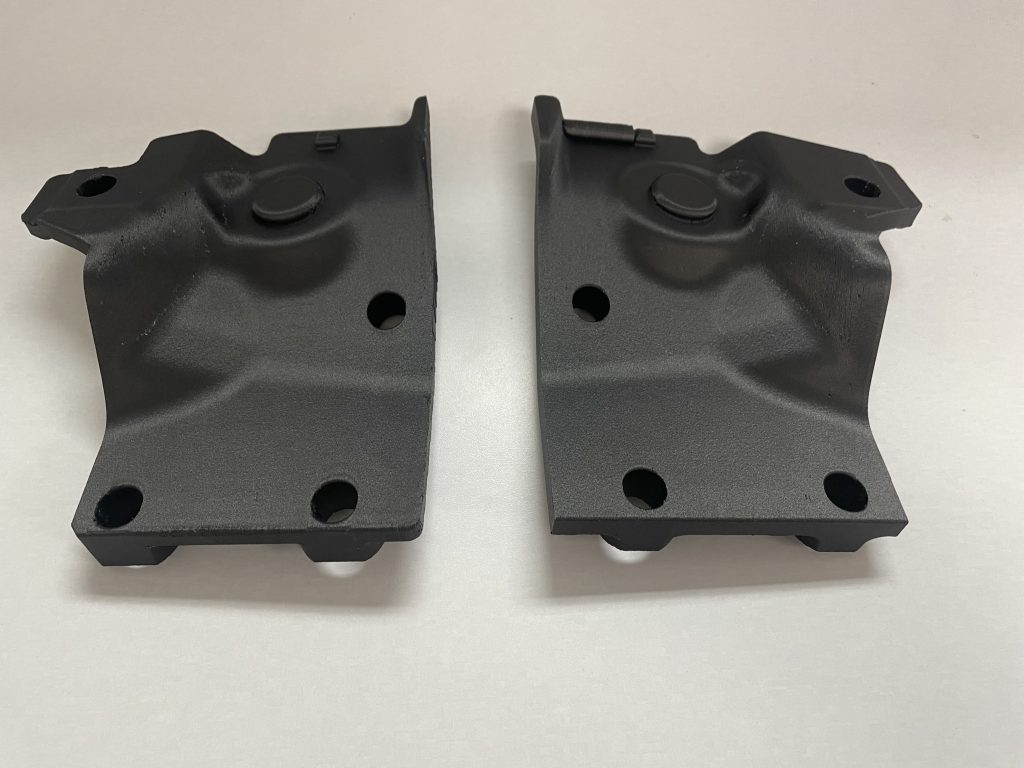
Industrial manufacturing vs. Hobbyist 3D printers
Over recent years, low-cost, entry-level desktop 3D printers have been increasingly adopted for professional applications that don’t require advanced materials. Abro addressed “misconceptions” about these consumer-level products. “Sometimes people misconstrue what you can get out of a hobbyist printer versus what you would get out of an industrial printer,” he explained. “These things are night and day.”
Abro compared the disparity with the difference between a scooter and an F-150. “They’re both modes of transportation, but they are not the same. If you need to haul drywall, you’re going with the F-150, not the scooter.”
He added that low-cost desktop FDM 3D printers damage Stratasys’ business and the 3D printing industry. According to Abro, potential customers will adopt a “cheaper desktop hobby type system” and “have a bad experience” because it doesn’t meet their quality and reliability requirements. Stratasys’ automotive expert believes these experiences “taint the image of additive,” a core message he will push during RAPID + TCT 2025.
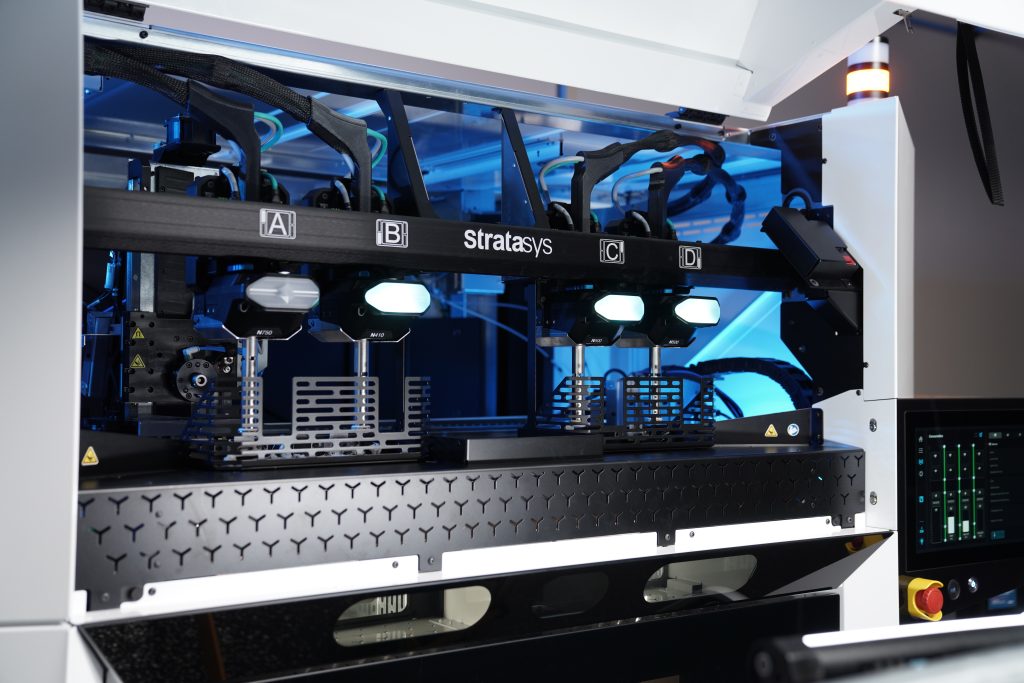
The future of 3D printing for automotive at RAPID + TCT 2025
During RAPID + TCT 2025, Riha is looking forward to exploring recycling technologies, intending to increase the sustainability of his operations. “I want to see if there’s some avenue where I can try to reclaim some of the materials we use,” he added.
Riha also expressed his intention to adopt metal 3D printing technology in the future. While Ford does possess metal 3D printers, metal additive capabilities are currently absent at Riha’s lab. He shared a preference for “wire-feed technologies” like WAAM and DED 3D printing over laser powder bed fusion (LPBF). “I’d like to have something I can put on my machining center to lay down metal and machine it,” Ford’s prototyping specialist revealed.
For Stratasys, Abro sees RAPID + TCT 2025 as a great opportunity to connect with customers. He is particularly excited by the show’s location in Detroit, widely considered the birthplace of automotive manufacturing. “It’s a really good place to be as the automotive segment leader,” he said. “Sharing the F3300 step change with customers is my main goal.”
Abro sees the future of 3D printing in automotive expanding most on the factory floor. In particular, he believes automakers will increasingly rely on 3D printing for fixturing and tooling. “Today, only 1-3% of tools are made with additive manufacturing. But we hear that number could reach 15-20%,” he explained. “Even a conservative 5x increase presents a huge opportunity.”
In the next decade, Abro expects the focus of 3D printing to shift from material development to increasing throughput. “The thing that makes additive a super tool is speed,” he said. “If you continue to improve throughput, our position in the industry becomes much stronger for all applications.”
For Riha, additive manufacturing is set to become a standard part of product development, particularly for early prototypes. In his own field, Riha envisions a switch from building drivable prototypes to simulating environments where attributes are tested on tables, jigs, and fixtures. “The way we test out new concepts can be improved, and using additive manufacturing allows engineers to quickly get to the result they’re looking for.”
Who won the 2024 3D Printing Industry Awards?
Subscribe to the 3D Printing Industry newsletter to keep up with the latest 3D printing news.
You can also follow us on LinkedIn, and subscribe to the 3D Printing Industry Youtube channel to access more exclusive content.
Featured image shows the show floor at RAPID + TCT 2024. Photo via SME.
